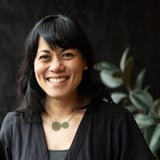Log in or create a free Rosenverse account to watch this video.
Log in Create free account100s of community videos are available to free members. Conference talks are generally available to Gold members.
This video is featured in the Climate UX Case Studies playlist.
Summary
Climate change demands action, but many UX professionals feel stuck between deep climate concern and uncertainty about making meaningful impact in their current roles. At this session, UXer Sara Conklin will share how she transformed from climate-anxious and feeling “climate-stuck” at work to driving climate impact through industry credibility without changing jobs. Key insight: UX skills alone aren't enough. You need technical climate knowledge to add real value. Sara will share the strategies she used to shift from climate-stuck to focused contributor, plus concrete tools to build climate clarity, confidence, credibility, and contributions whether or not you stay in your current role.
Key Insights
-
•
Adding specificity to the climate Venn diagram by defining what specific work needs to be done is crucial for effective climate action.
-
•
Reading and decoding a company’s ESG report is a valuable first step to understanding how one can contribute to climate goals internally.
-
•
Using a double diamond design process helps to navigate ambiguous climate problems by iterating between exploring problem spaces and focusing on solutions.
-
•
Focusing too broadly on multiple climate problems can lead to floundering; narrowing down to one well-defined problem accelerates impact.
-
•
Self-directed learning combined with structured, niche climate classes provides both foundational knowledge and practical skills.
-
•
Building a network of people who know just slightly more than you (‘one notch above’) makes networking conversations more productive and less intimidating.
-
•
Freelancing or pro bono projects offer hands-on experience to apply climate knowledge even without a formal climate job.
-
•
Even if your current job isn’t climate-focused, you can bring climate action into it by reading ESG reports, finding allies, and applying climate design principles.
-
•
Strategic networking for climate work involves targeted outreach with specific questions, not generic cold contacts.
-
•
Making a disciplined learning plan and blocking time for ‘flat food learning’ helps overcome the common excuse of ‘not having enough time’.
Notable Quotes
"Many UXers do feel stuck and care about climate, but they’re really not sure how to contribute professionally."
"I started at absolute zero with climate knowledge and now I have clarity, confidence, credibility, and ability to contribute."
"What I realized is you need to add one word to the climate Venn diagram: specific, what specific work needs doing."
"Reading my company’s ESG report overwhelmed me with words I didn’t understand but was crucial for knowing where to focus."
"You have to get super specific about the climate problem you want to solve and why it's important for you."
"Don’t cold reach out to people with ‘let’s connect’; instead, ask very specific questions about topics they care about."
"Network with people who know just one notch more than you, not the CEO right away."
"Self-directed learning is hard and busy, but you have to make time and schedule learning religiously."
"I applied my unique skills in UX strategy, behavior design, and innovation facilitation to help climate tech reduce adoption barriers."
"Every job is a climate job. Wherever we are, the climate needs us to address it in our role."
Or choose a question:
















More Videos

"The biggest myth of all is you can't teach creativity."
Dr. Karl JeffriesThe Science of Creativity for DesignOps
January 8, 2024

"Qualitative research gives us the richer, more nuanced and complex conversations."
Leisa ReicheltThe Five Dysfunctions of Democratized Research at Scale
March 30, 2020

"Research doesn’t start and end with the researcher; it’s about continual learning and supporting communities to keep learning."
Robert Fabricant Sahibzada Mayed Nidhi Singh RathoreIndustry junctures: Paths forwards for UXR and the critical decisions that get us there [Advancing Research Community Workshop Series]
October 2, 2024

"There is power in how you guide people’s attention, and where you draw system boundaries."
Luke Roberts Christian Bason, Ph.D. Amanda Woolley Ben ReasonPanel Discussion
December 4, 2024

"We’ve put much more effort into workshop facilitation and teaching how to use the space effectively than on the design system itself."
David Cronin Uday Gajendar Peter Morville Kendra ShimmellDiscussion
May 13, 2015

"We're shopping for data across the organization to create virtual personas that guide our innovation."
Joe Meersman Pooria SohiUse AI to Drive Outcomes that Go Beyond the Design Sprint
September 25, 2024

"The gap between market research and user research is narrowing; their methods and questions are converging."
Jemma AhmedBringing together market and user research
October 17, 2019

"Visualizing data in a way executives can interpret is key to shifting from I think to I know."
Steve Portigal Chris Chapo Kelly Goto Christian RohrerDiscussion
May 13, 2015

"In decentralized teams, the risk is redundant insights and lack of cumulative knowledge."
Jen Cardello Dr. Shadi Janansefat Alex WrightCurating insight: Strategies for integrating knowledge across research functions
March 11, 2025
















